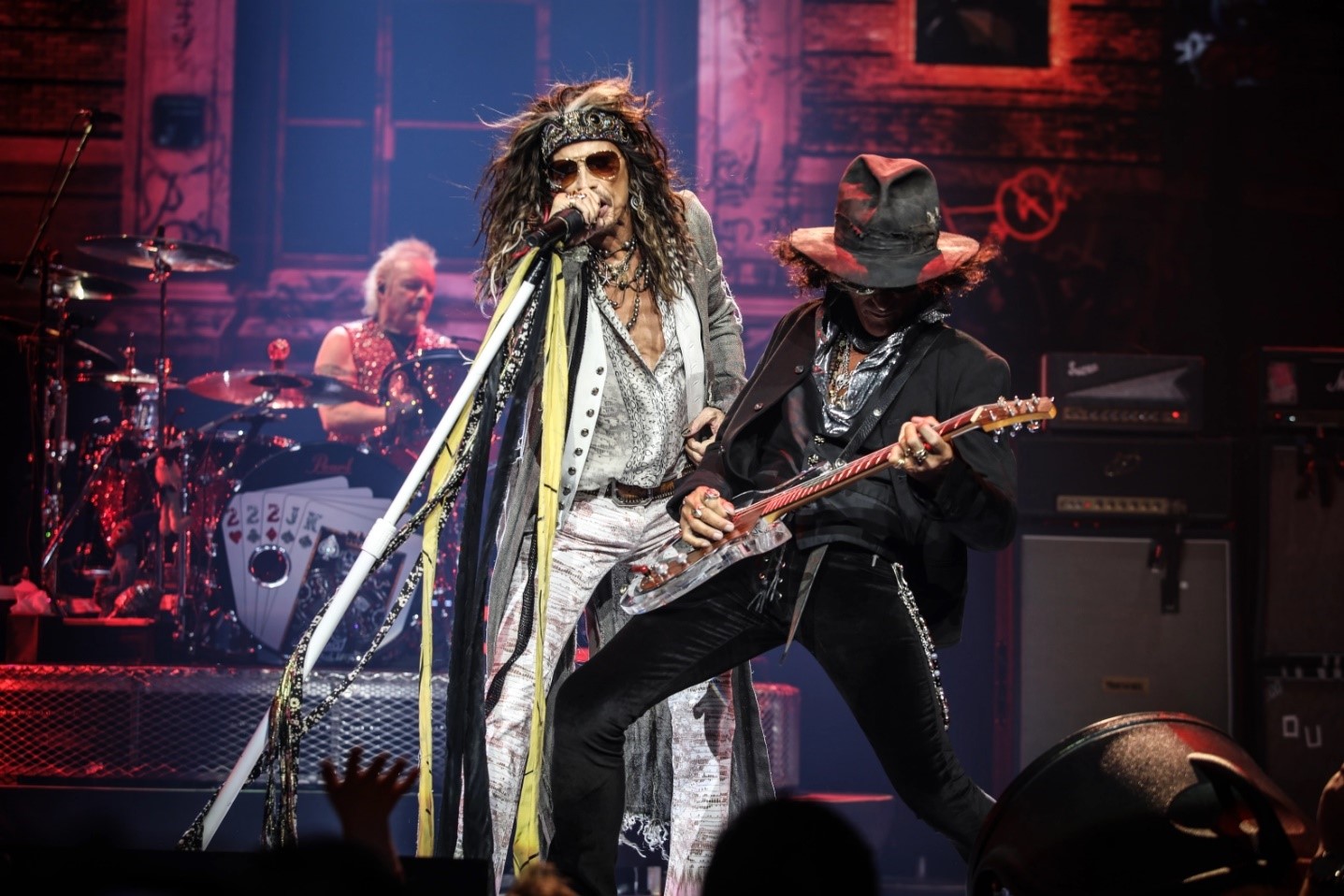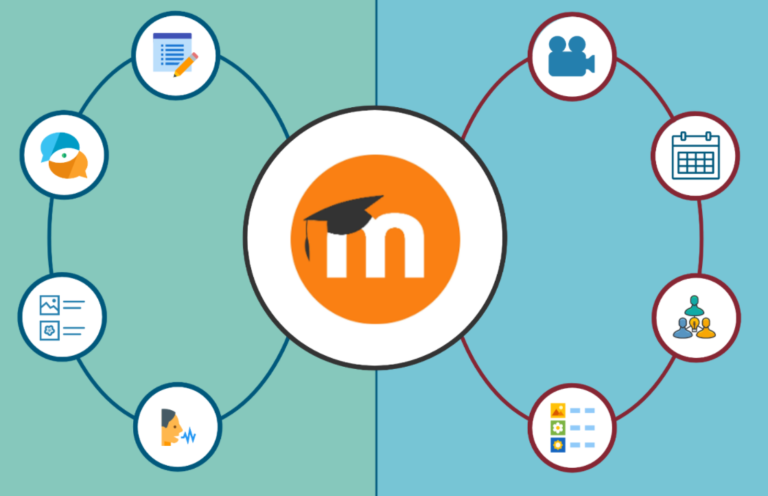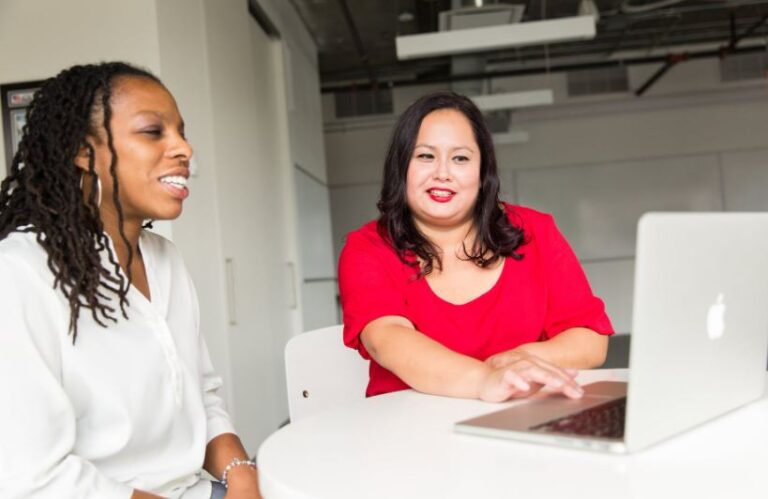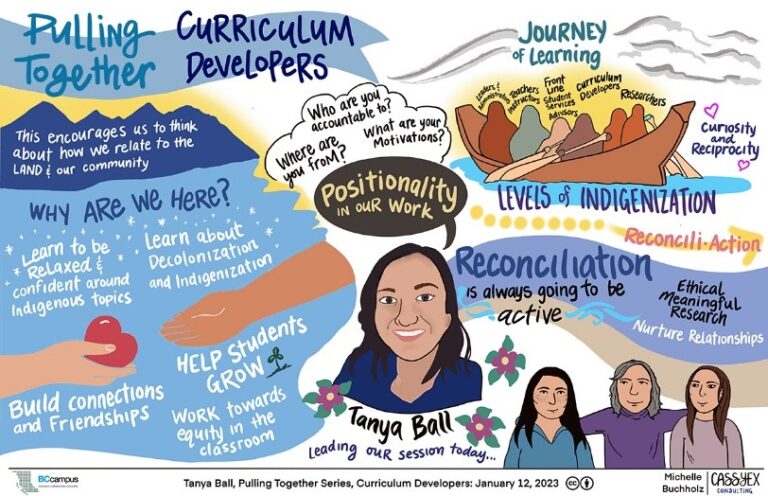How I Stopped Being the David Lee Roth of 1990’s Instruction

I first stood in-front of a class in the early 90’s. This was back when we still had chalkboards, and “no smoking” signs in the classrooms. Having a handful of papers (remember paper?) shoved in my face accompanied by the imperative, “here, teach that!” represented the totality of my training. So, I did what we all do. I pretended to be the professors and instructors who taught me, but you know, only the good ones. I stood in front of the class and I talked. A lot!! If the students’ grades were high in a semester, it was because I was a teaching savant (obviously) and when the grades were low, it was the result of poor rearing practices or genetics. Obviously, it wasn’t an issue with the teaching style, because I used the exact same approach last semester and that group of students got it. Over time, I saw myself as the Ravi Shankar of educators, responsible for my students’ knowledge, humor and spiritual balancing. It was clear to me that my role was to impart my knowledge to those 35 nearly developed minds in front of me, and those who were able to hear the music of my teaching virtuoso would hum along in reverence. Those who didn’t would live sad little 2-dimensional lives.
Sometime later I was introduced to the term learning outcomes which suggested education should, basically, be focused on what is essential for the learners to successfully do at the end of their educational experiences, and the students’ educational activities should be focused on helping them achieve that outcome. This was revolutionary. My focus was to be on helping the learners learn the things they needed to learn, rather than on what I wanted to teach? This didn’t seem correct. I am the content god who shows up center stage to placate my fans by starting with the classics before ripping off my fur coat David lee Roth style to let the spotlight dance off my bronzed torso as I sing the material from the new album for the un-washed masses of vandals sitting in my class. Metaphorically of course. I never tanned that well. With some consideration and reflection, I came to realize that my course being more about the learning the students could demonstrate rather than my ability to endlessly talk about a subject had merit.
My role as teacher shifted from focusing on what I want to teach to what the outcomes of the learning should be for the student. With that came clarity when a student struggled with the material. Previously, my purpose was to teach, and I did that flawlessly. Now that my purpose was to help the student attain the learning objective, I was encouraged to try different approaches and activities to support the student in meeting the objective. Learning objectives helped me help my students.
Stated simply, Learning Objectives are statements that describe the learning that students can demonstrate at the end of an educational activity like a lesson, course, or program. Lesson Learning Objectives (LLOs) speak to what a student will be able to do or know at the end of the lesson. These objectives tend to be very specific, dealing with discrete ideas, tasks or attitudes that will become the foundation of knowledge on which future broad understanding is built. LLOs are dealt with extensively in the Instructional Skills Workshop Offered by the Teaching and Learning Commons. If you have any questions, or interest in LLOs register for the ISW. You can do this by clicking here. Do it now. Stop reading this and go register. I will wait.
Course Learning Objectives (CLOs) are probably the most familiar as most of the courses taught at KPU have learning objectives baked into the course outline. Similar to LLOs, CLOs speak to what the student will be able to do or know at the end of the learning activity, and in this case that learning activity is a course. As this is the end of the course, the CLOs should reference the integration of material taught in lessons into themes or broader understanding and its application in a measurable or demonstrated manner. For example, in a class on European history from 1918 – 1945 LLOs may focus on discrete occurrences of economic, political or social importance, while the CLOs focus on synthesizing the impact of relevant occurrences and applying them in a cogent description of how these factors led to world war two.
Program Learning Objectives (PLOs) are probably the most nebulous to understand although they are just learning objective like LLOs and CLOs. PLOs state what the learner should be able to demonstrate doing or knowing in a measurable way at the end of their program of study. While a CLO consolidates the learning from the all the lessons, the PLOs consolidate the learning from the courses. The learner should be able to use this consolidate information immeasurable and demonstrable ways. Coming back to our example of a class on European history from 1918 – 1945, if the LLOs may focus on discrete occurrences of Economic, political or social importance, and the CLOs focus on synthesizing the impact of relevant occurrences and applying them in a cogent description of how these factors led to world war two, then the PLOs for a degree in History may include “Interpret past and contemporary events in broader historical contexts to explain the complex process by which societies have evolved.”
While I have demonstrated that the more specific lower level Learning Outcomes inform the higher-level learning outcome, it is important to note that this is not the order that they are developed. When developing learning outcomes, it is the highest level that is the starting point for the learning outcomes. It is important to deal with the general before moving to the specific.
Generally speaking, Program Learning Outcomes are developed from the intended graduate competencies of a particular program. Graduate competencies are the Knowledge, Skills and Attitudes (KSAs) a student who has completed a program of study are expected to have. Knowledge usually involves specific discipline related information, for example, knowing behaviorism, knowing ohms law. or knowing the stochiometric ratio for petroleum to combust. Skills can include discipline specific information such as able to weld aluminum, calculate pi to 5000 decimals, and brew a batch of beer. Skills can also transcend discipline, for example, communication skills, leadership skills, and the ability to work in teams. Attitudes speak to a graduate disposition to discipline related topics for example ethical practices, respect for worksite dangers, or a commitment to social justice.
Graduate competencies can be imposed, or motivated. Imposed Competencies refer to the usually external requirements for a program. These can be requirement for membership with a regulatory body, ministry requirements for graduates, or institutional requirements. Motivated Competencies are competencies that are wanted by the student or the instructor. Generally, these KSAs will be in areas that contribute to; a profession or vocation, intellectual or interpersonal development, and allow students to fully participate in society. One category of competencies that is seldom addressed is the category that related to the future of the discipline.
Instructors of a discipline will have a particular insight into that discipline and the direction it takes in the future. Often these speak to things like developing ideas around sustainability, ethical practice or commitment to social justice. When developing Graduate Competencies, it is best to be as comprehensive as possible. Forty identified KSAs is good, eighty is better.
Where PLOs come into play is they describe the measurable or demonstrable application of these knowledge skills and abilities. Graduate Competencies are the specific individual knowledge skills and abilities, and PLOs are statements that offer measurable insight into the whole being greater than the sum of its parts. PLOs refer to the learner’s ability to employ the material they have learned beyond mere facts, technique, or attitude. For example, a learner in a wood working program may be able to describe the qualities of different species of wood at the end of a class. They may be able to describe traits or characteristic of a Krenov case on stand or a Nakamura bench at the end of a course. At the end of a program, however, the graduate will be able to consult with clients, and create heirloom quality furniture, marrying dimension, shape, style and purpose with wood selection and technique. The PLOs outline the graduates’ ability to apply their collected knowledge, skills and abilities in a measured and demonstrable way. PLOS are the single most enduring understanding graduates should retain.
PLOs help the student know what they will be able to do at the end of their studies, and, more specifically, what they will be accountable for on their educational journey.
To support this, PLOs are often written from the perspective of the student, completing the following sentence stem: “After successfully completing the program, students will be able to”. This stem is followed with:
- a measurable verb,
- the expected KSAs and
- a description of how the KSAs will be applied.
A measurable verb is something that can be observed or measured. Create, display, and apply are all examples of verbs that describe measurable actions. Verbs like use, know or understand are much less measurable and too nebulous to include in a well written PLO. For more ideas around verb options, consider Bloom’s taxonomy of learning. Generally speaking the verb chosen for the PLO should be fairly high on the taxonomy as it is expected after Graduation. Of course, this should be tailored for the credential. A diploma may include PLOs more at the middle level while certificates and citations would use verbs at the lowest introductory level.
The expected KSAs would include a graduate competency that is important enough to the student, the instructor and the program to warrant selection. Finally, the description of how the KSA will be displayed provides an indication of KSA application that is both observable and measurable.
When applied to the example, I gave an example of a PLO from a wood working class. This PLO stated “At the end of a program, however, the graduate will be able to consult with clients, and create heirloom quality furniture, marrying dimension, shape, style and purpose with wood selection and technique”. We can see that this PLO begins with a variation of the stem “After successfully completing the program, students will be able to “.
There are two verbs in this PLO, “Consult” and “Create”, both of which are observable demonstrable and measurable. The expected KSAs include “marrying dimension, shape, style, purpose, wood selection, and technique”. Finally, the application of the KSA is “heirloom quality furniture”. a student reading tis PLO will have a clear understanding of their accountability, what they are expected to be able to do by the end of the program.
PLOs also support the instructors by clearly communicating the outcomes of the program, the instructor has clear guidance to help them provide deliberate and consistent educational activities. Learning Objectives aren’t intended to stifle teachable moments, or instructor creativity, rather they promote them. As Hussey and Smith (2008) point out, “a discussion can take unexpected turns; questions can surprise the teacher and the class. Good teachers will grasp these occasions as opportunities or “learning moments””. As instructors explore these “corridors of tolerance” (McAlpine et al 1999) in the program, they pursue topics of varying relevance and desirability. When they are ready, PLOs help them find their way back to the topic.
Learning Outcomes provides clarity and guidance for students and instructors in all aspects of instructional activities. They are interdependent, influencing and being influenced by each other at all levels. Lower level learning outcomes inform learning outcomes at higher levels, but are developed from the Program level first, followed by the course level and then the lesson level. At the Program level, they are created from imposed and motivated Graduate Competencies, or KSAs for each program. These KSAs are grouped and then PLOs are written from the student’s perspective including a measurable verb, a KSA and an indication of how that KSA will be applied. Well written PLOs often suggests how the accumulated learnings are greater than the collection of course outcomes.
Shifting my focus as an educator from my teaching to the outcomes for my students has, I think rightly, re-positioned the metaphorical spotlight from me to my students. Instead of just me, now there are 35 David Lee Roths, centre stage, ripping their fur coats off. This sounds like a much more interesting world to live in.
Hussey, T. & Smith, P. (2008) Learning outcomes: a conceptual analysis, Teaching in Higher Education, 13:1, 107-115, DOI: 10.1080/13562510701794159
McAlpine, I., C. Weston, C. Beauchamp, J. Wiseman, and J. Beauchamp. 1999. Building a
metacognitive model of reflection. Higher Education 37: 105_31.
Meyer, S. M.; Niekerk, S. E. (2008). Nurse Educator in Practice. Cape Town: Juta and Company Ltd. p. 25. ISBN 978-0-7021-7299-1.
Uys, L; Gwele, N (2005). Curriculum Development in Nursing: Process and Innovation. Oxon: Routledge. p. 194. ISBN 0415346290.
Craig Wright
Craig’s role at KPU is to support instructors with defining and delivering meaningful learning opportunities for their students. He works with instructors to clarify instructional goals and intention and effectively apply, as needed, theory, practice, and technology, to deliberately meet specific instructional goals. Craig endeavors to meet people where they are. The support he provides and tactics he uses are tailored to the instructor’s context and need from holistic program development and revision to assignment support.





